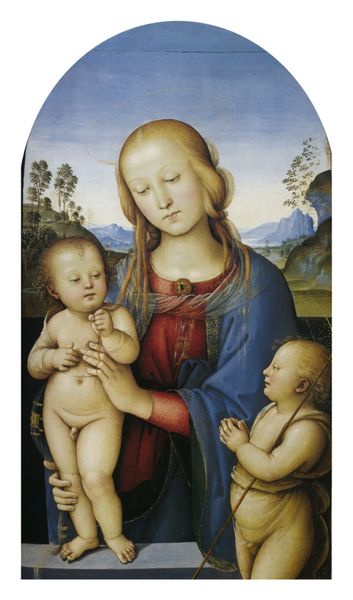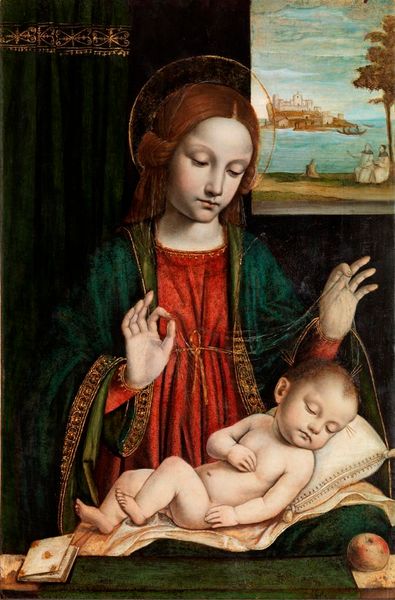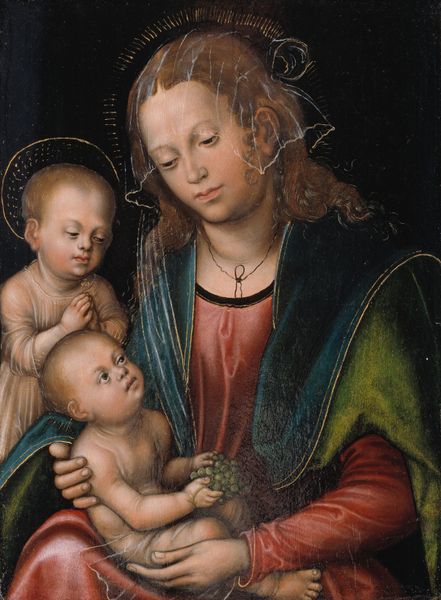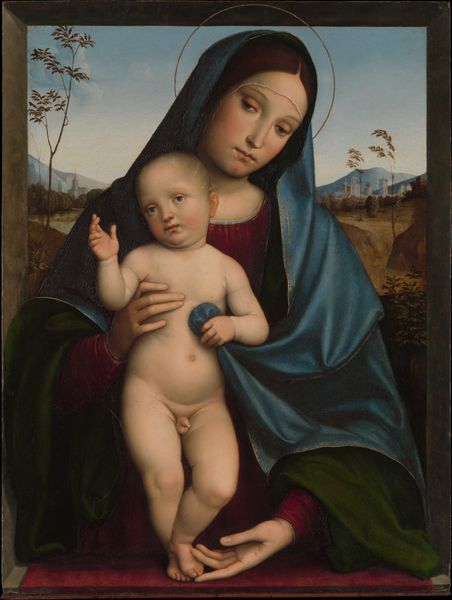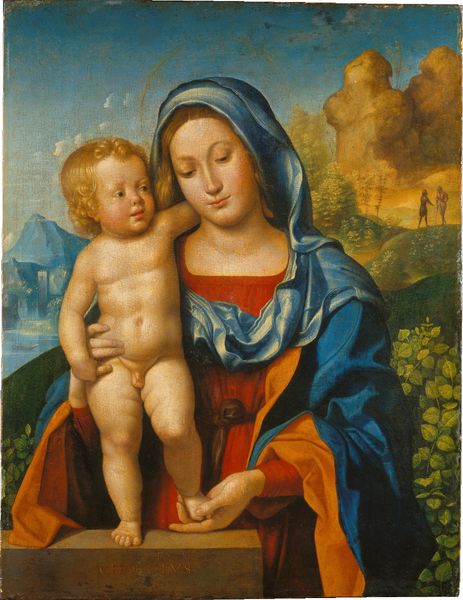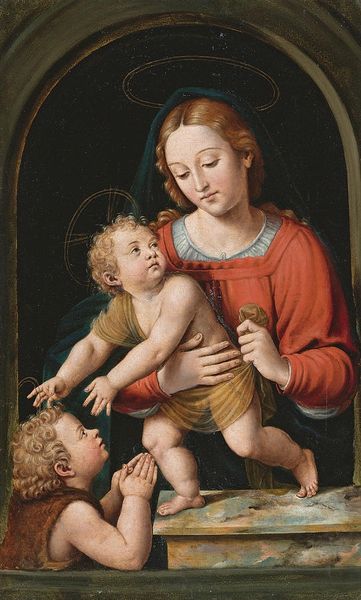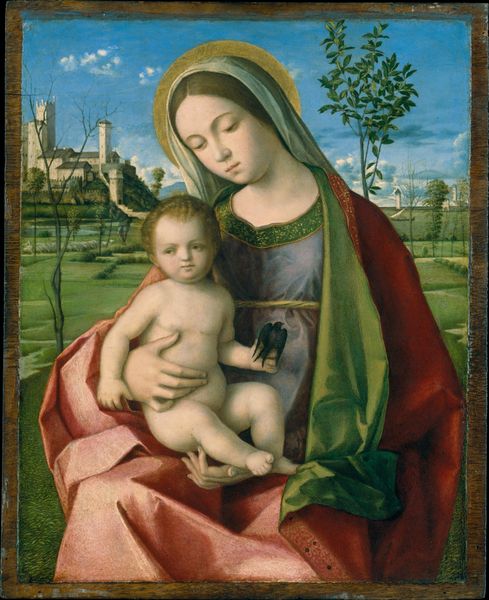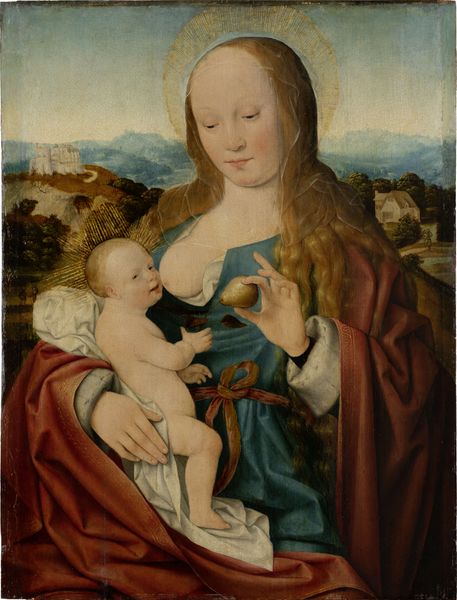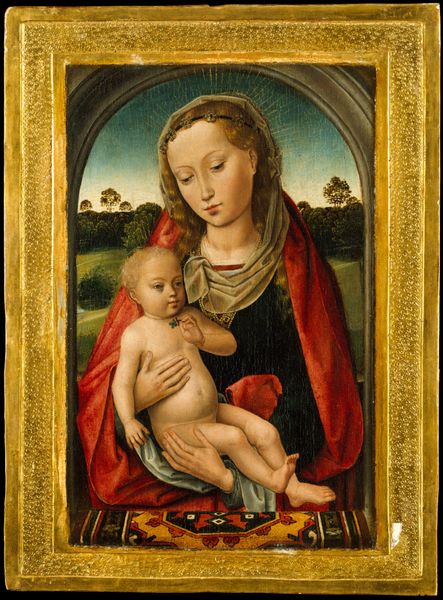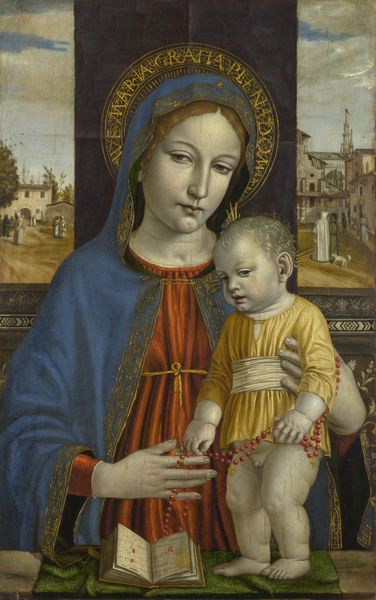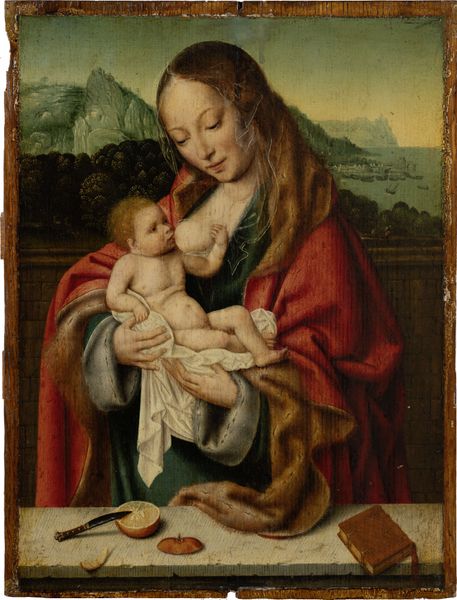
painting, oil-paint
#
portrait
#
painting
#
oil-paint
#
figuration
#
genre-painting
#
history-painting
#
northern-renaissance
Copyright: Public Domain: Artvee
Curator: This oil painting presents "Virgin Mary with the Child and Saint John the Baptist," attributed to Lucas Cranach the Elder. Editor: Oh, immediately striking is this gentle sadness that permeates the whole scene; the children appear quite serious for a playdate! There is a placid landscape fading in the background almost as a distant, melancholy echo of their fate. Curator: Absolutely, that blend of serenity and gravity is characteristic of the Northern Renaissance. Cranach, a key figure in that movement and a court painter for the Electors of Saxony, often imbues his religious subjects with a kind of grounded, human quality. We see the Virgin less as an ethereal figure and more as a mother contemplating the future. It's an intriguing move politically, placing powerful, relatable iconography. Editor: Relatable, perhaps for its time! Look at the composition – it's rather intriguing; they're all squished toward the foreground, pressed in on all sides. It does draw attention to the children and her somber beauty. Does she know the history? Curator: Her downcast gaze suggests so! The infant Saint John often accompanies Mary and Jesus in Renaissance art, his presence a subtle reminder of Christ's mission and sacrifice. His hands in prayer. Here, it’s really driven home that it’s about destiny. Editor: It really is about that heaviness! Considering this was likely a commissioned piece, it almost makes me wonder, was the intention to instill piety or reflect back the somber realities of life and political life under a monarch? Were the patrons just trying to use this narrative in a soft way to imply that leadership means knowing that heaviness, and knowing you'll give your life one day? Curator: Well, these works circulated widely and fostered public sentiments of piety while certainly reinforcing the elector's authority through religious symbolism, influencing moral and political values within the Saxon court and beyond. The choice to include St. John elevates this idea even further! Editor: That's where its value shifts for me: from a painting to an artifact representing soft propaganda. Thanks for that history; it lends to an entirely new level of interpretation. Curator: It is pieces like this which give me endless opportunities to see how art can have an incredibly active voice in our shared past, the silent speakers of human political strategy!
Comments
No comments
Be the first to comment and join the conversation on the ultimate creative platform.
